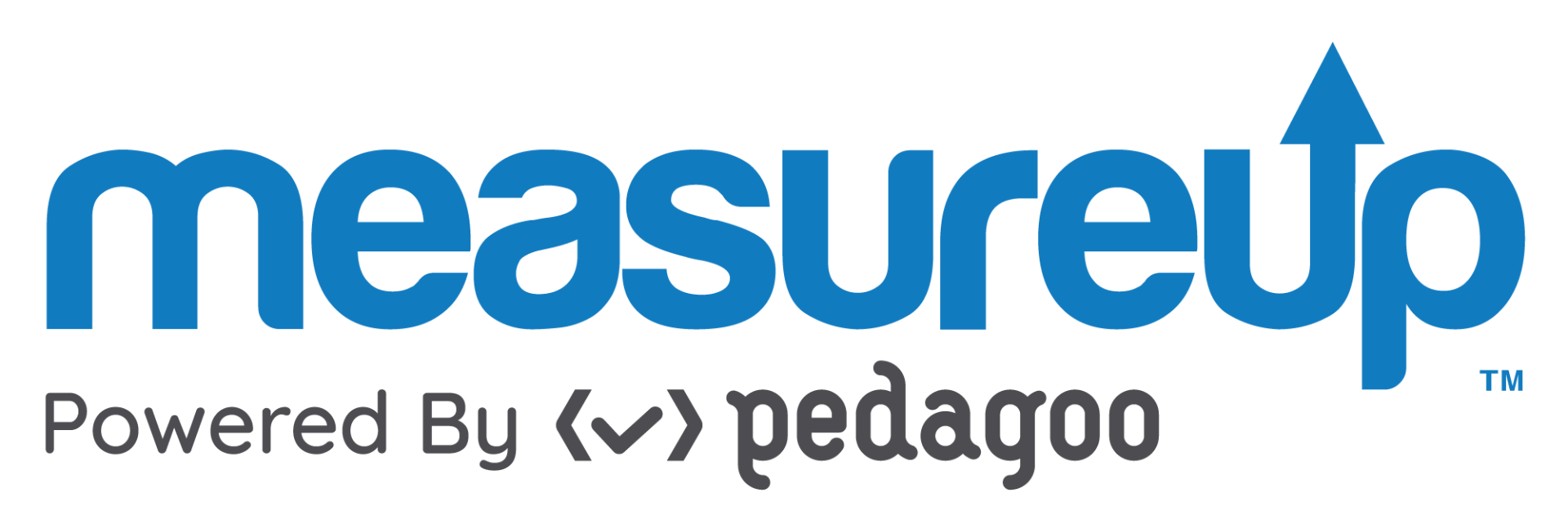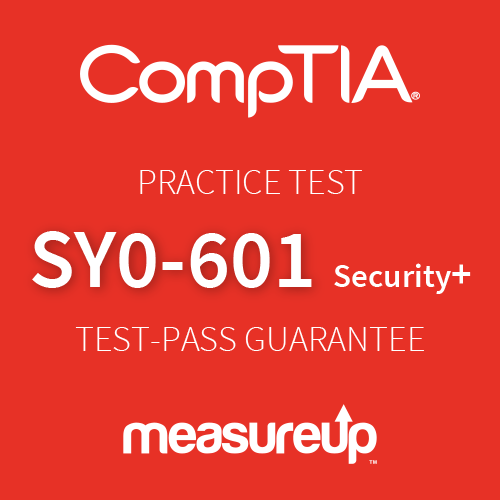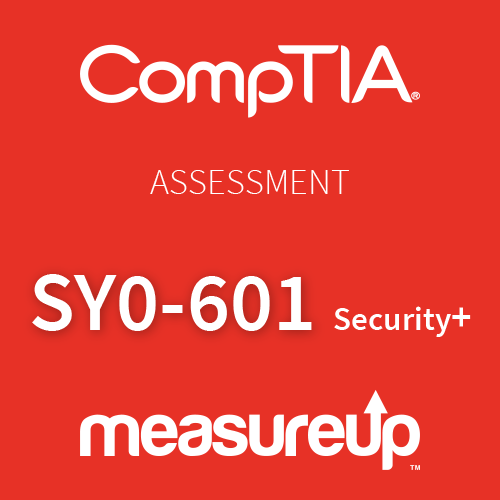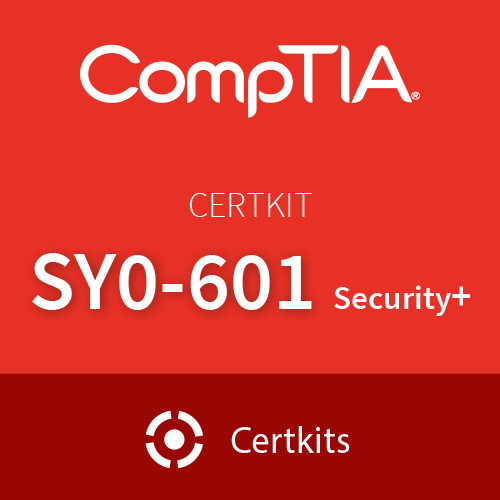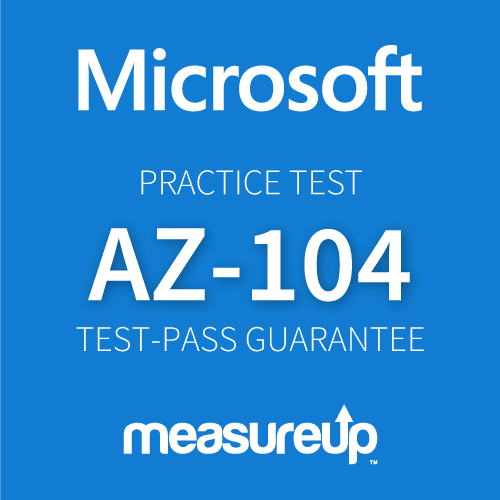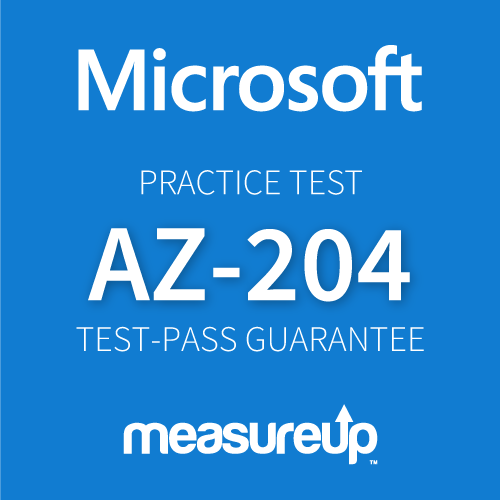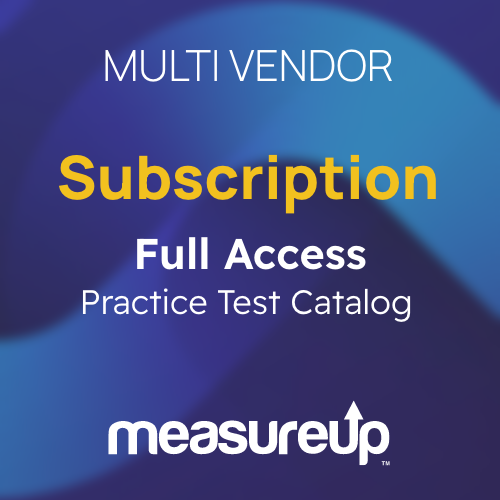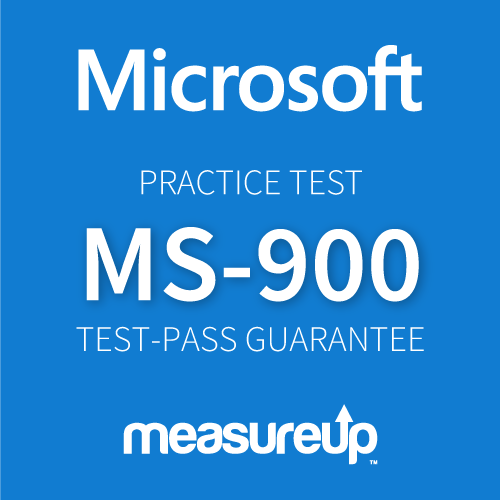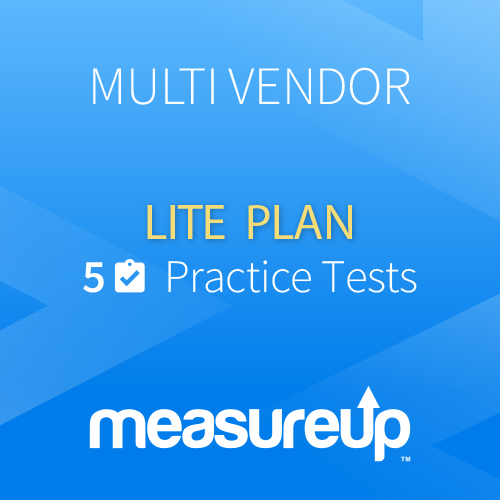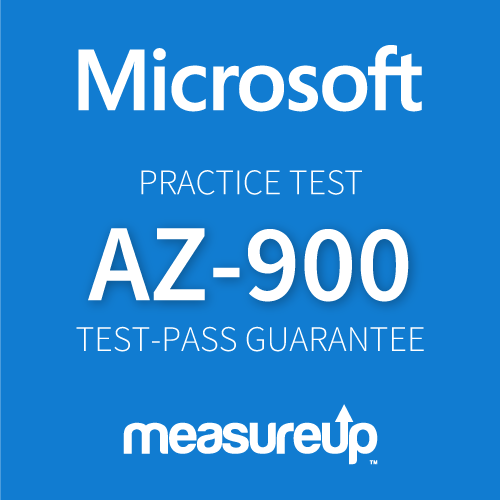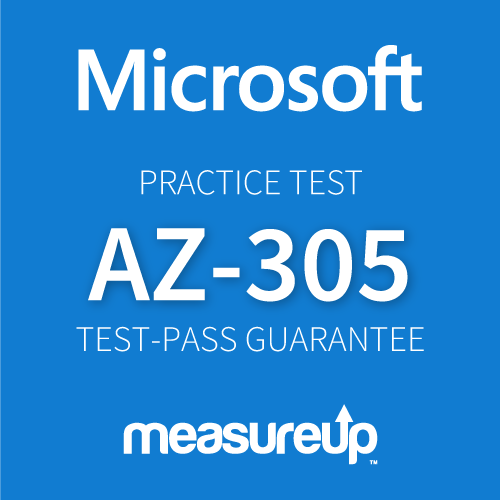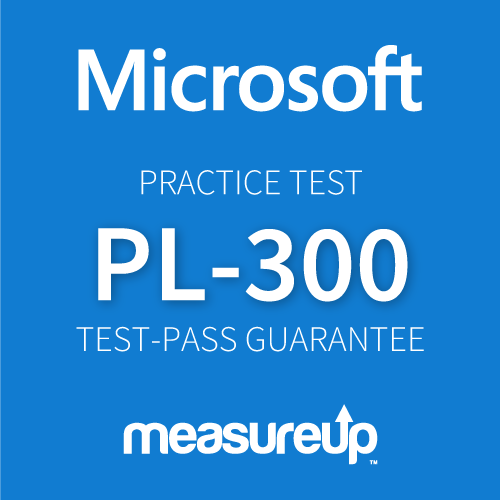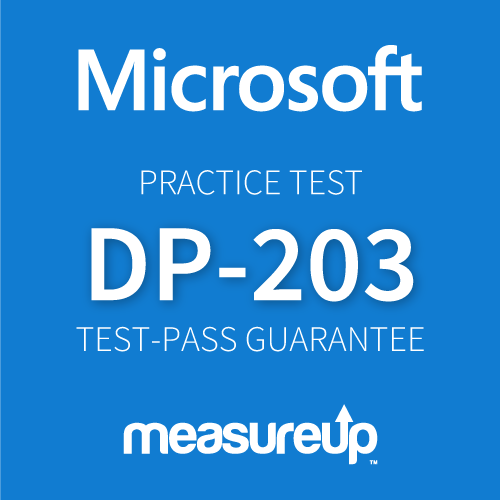CompTIA Practice Test SY0-601: CompTIA Security+
The SY0-601 practice test trains you in the technical skills required for cybersecurity professionals.
Why should I take the SY0-601 exam?
The CompTIA SY0-601 exam is a vendor-neutral certification that offers you a great opportunity to gain the skills required to start a rewarding career in cybersecurity, by allowing you to demonstrate your knowledge of baseline IT skills and core security functions. The CompTIA SY0-601 exam has no official prerequisites, meaning that you can take it as a first exam in cybersecurity, although it is recommended that candidates have approximately two years of experience in an IT role with a security focus.
The SY0-601 practice test includes two different modes: certification and practice mode. Certification mode allows you to assess your knowledge and discover your weak areas, with practice mode allowing you to focus on the areas that need development.
Are you familiar with the MeasureUp Pricing Plans?
Discover our Subscription Plans.
Release Date: 12/2020
Job Role: Cloud Engineer, DevOps Developer, Helpdesk Analyst, Helpdesk Manager, IT Auditors, IT Project Manager, Network Engineer, Security Administrator, Security Analyst, Security Engineer, Software Developer, System Administrator
Language: English
The SY0-601 practice test contains 255 questions and covers the following objectives:
Threats, Attacks, and Vulnerabilities – 57 questions
Compare and contrast different types of social engineering techniques.
Phishing, Smishing, Vishing, Spam, Spam over Internet messaging (SPIM), Spear phishing, Dumpster diving, Shoulder surfing, Pharming, Tailgating, Eliciting information, Whaling, Prepending, Identity fraud, Invoice scams, Credential harvesting, Reconnaissance, Hoax, Impersonation, Watering hole attack, Typo squatting, Pretexting, Influence campaigns, Principles (reasons for effectiveness).
Given a scenario, analyze potential indicators to determine the type of attack.
Malware, Password attacks, Physical attacks, Adversarial artificial intelligence (AI), Supply-chain attacks, Cloud-based vs. on-premises attacks, Cryptographic attacks.
Given a scenario, analyze potential indicators associated with application attacks.
Privilege escalation, Cross-site scripting, Injections, Pointer/object dereference, Directory traversal, Buffer overflows, Race conditions, Error handling, Improper input handling, Replay attack, Integer overflow, Request forgeries, Application programming interface (API) attacks, Resource exhaustion, Memory leak, Secure sockets layer (SSL) stripping, Driver manipulation, Pass the hash.
Given a scenario, analyze potential indicators associated with network attacks.
Wireless, On-path attack (previously known as man-in-the-middle attack/man-in-the-browser attack), Layer 2 attacks, Domain name system (DNS), Distributed denial-of-service (DDoS), Malicious code or script execution.
Explain different threat actors, vectors, and intelligence sources.
Actors and threats, Attributes of actors, Vectors, Threat intelligence sources, Research sources.
Explain the security concerns associated with various types of vulnerabilities.
Cloud-based vs. on-premises vulnerabilities, Zero-day, Weak configurations, Third-party risks, Improper or weak patch management, Legacy platforms, Impacts.
Summarize the techniques used in security assessments.
Threat hunting, Vulnerability scans, Syslog/Security information and event management (SIEM), Security orchestration, automation, and response (SOAR).
Explain the techniques used in penetration testing.
Penetration testing, Passive and active reconnaissance, Exercise types.
Architecture and Design – 57 questions
Explain the importance of security concepts in an enterprise environment.
Configuration management, Data sovereignty, Data protection, Geographical considerations, Response and recovery controls, Secure Sockets Layer (SSL)/Transport Layer Security (TLS) inspection, Hashing, API considerations, Site resiliency, Deception and disruption.
Summarize virtualization and cloud computing concepts.
Cloud models, Cloud service providers, Managed service provider (MSP)/managed security service provider (MSSP), On-premises vs. off-premises, Fog computing, Edge computing, Thin client, Containers, Microservices/API, Infrastructure as code, Serverless architecture, Services integration, Resource policies, Transit gateway, Virtualization.
Summarize secure application development, deployment, and automation concepts.
Environment, Provisioning and deprovisioning, Integrity measurement, Secure coding techniques, Open Web Application Security Project (OWASP), Software diversity, Automation/scripting, Elasticity, Scalability, Version control.
Summarize authentication and authorization design concepts.
Authentication methods, Biometrics, Multifactor authentication (MFA) factors and attributes, Authentication, authorization, and accounting (AAA), Cloud vs. on-premises requirements.
Given a scenario, implement cybersecurity resilience.
Redundancy, Replication, On-premises vs. cloud, Backup types, Non-persistence, High availability, Restoration order, Diversity.
Explain the security implications of embedded and specialized systems.
Embedded systems, Supervisory control and data acquisition, Internet of Things (IoT), Specialized, Voice over IP (VoIP), Heating, ventilation, air conditioning (HVAC), Drones, Multifunction printer (MFP), Real-time operating system (RTOS), Surveillance systems, System on chip (SoC), Communication considerations, Constraints.
Explain the importance of physical security controls.
Bollards/barricades, Access control vestibules, Badges, Alarms, Signage, Cameras, Closed-circuit television (CCTV), Industrial camouflage, Personnel, Locks, USB data blocker, Lighting, Fencing, Fire suppression, Sensors, Drones, Visitor logs, Faraday cages, Air gap, Screened subnet (previously known as demilitarized zone), Protected cable distribution, Secure areas, Secure data destruction.
Summarize the basics of cryptographic concepts.
Digital signatures, Key length, Key stretching, Salting, Hashing, Key exchange, Elliptic-curve cryptography, Perfect forward secrecy, Quantum, Post-quantum, Ephemeral, Modes of operation, Blockchain, Cipher suites, Symmetric vs. asymmetric, Lightweight cryptography, Steganography, Homomorphic encryption, Common use cases, Limitations.
Implementation – 66 questions
Given a scenario, implement secure protocols.
Protocols, Use cases.
Given a scenario, implement host or application security solutions.
Endpoint protection, Boot integrity, Database, Application security, Hardening, Self-encrypting drive (SED)/full-disk encryption (FDE), Hardware root of trust, Trusted Platform Module (TPM), Sandboxing.
Given a scenario, implement secure network designs.
Load balancing, Network segmentation, Virtual private network (VPN), DNS, Network access control (NAC), Out-of-band management, Port security, Network appliances, Access control list (ACL), Route security, Quality of service (QoS), Implications of IPv6, Port spanning/port mirroring, Monitoring services, File integrity monitors.
Given a scenario, install and configure wireless security settings.
Cryptographic protocols, Authentication protocols, Methods, Installation considerations.
Given a scenario, implement secure mobile solutions.
Connection methods and receivers, Mobile device management (MDM), Mobile devices, Enforcement and monitoring, Deployment models.
Given a scenario, apply cybersecurity solutions to the cloud.
Cloud security controls, Solutions, Cloud native controls vs. third-party solutions.
Given a scenario, implement identity and account management controls.
Identity, Account types, Account policies.
Given a scenario, implement authentication and authorization solutions.
Authentication management, Authentication/authorization, Access control schemes.
Given a scenario, implement public key infrastructure.
Public key infrastructure (PKI), Types of certificates, Certificate formats, Concepts.
Operations and Incident Response – 40 questions
Given a scenario, use the appropriate tool to assess organizational security.
Network reconnaissance and discovery, File manipulation, Shell and script environments, Packet capture and replay, Forensics, Exploitation frameworks, Password crackers, Data sanitization.
Summarize the importance of policies, processes, and procedures for incident response.
Incident response plans, Incident response process, Exercises, Attack frameworks, Intrusion Analysis, Stakeholder management, Communication plan, Disaster recovery plan, Business continuity plan, Continuity of operations planning (COOP), Incident response team, Retention policies.
Given an incident, utilize appropriate data sources to support an investigation.
Vulnerability scan output, SIEM dashboards, Log files, syslog/rsyslog/syslog-ng, journalctl, nxlog, Bandwidth monitors, Metadata, Netflow/sflow, Protocol analyzer output.
Given an incident, apply mitigation techniques or controls to secure an environment.
Reconfigure endpoint security solutions, Configuration changes, Isolation, Containment, Segmentation, SOAR.
Explain the key aspects of digital forensics.
Documentation/evidence, Acquisition, On-premises vs. cloud, Integrity, Preservation, E-discovery, Data recovery, Non-repudiation, Strategic intelligence/counterintelligence.
Governance, Risk, and Compliance – 35 questions
Compare and contrast various types of controls.
Category, Control type.
Explain the importance of applicable regulations, standards, or frameworks that impact organizational security posture.
Regulations, standards, and legislation, Key frameworks, Benchmarks /secure.
Explain the importance of policies to organizational security.
Personnel, Diversity of training techniques, Third-party risk management, Data, Credential policies, Organizational policies.
Summarize risk management processes and concepts.
Risk types, Risk management strategies, Risk analysis, Disasters, Business impact analysis.
Explain privacy and sensitive data concepts in relation to security.
Organizational consequences of privacy and data breaches, Notifications of breaches, Data types, Privacy enhancing technologies, Roles and responsibilities, Information life cycle, Impact assessment, Terms of agreement, Privacy notice.
Notes:
- The bullets that follow each of the skills measured are intended to illustrate how we are assessing that skill. Related topics may be covered in the exam.
- Most questions cover features that are general availability (GA). The exam may contain questions on Preview features if those features are commonly used.
System Requirements
A practice test is an informal exam designed to simulate the real test, whose objective is to prepare you better for what to expect on the real exam. A MeasureUp practice test contains around 150 questions covering the exam objective domains. In a MeasureUp practice test there are two different test-taking modes to prepare students for their certification: Certification Mode and Practice Mode.
- The Practice Mode lets users highly customize their testing environment. You can select how many questions they want to include in the assessment, the maximum time to finish the test, the possibility to randomize the question order, and select how and which questions will be shown in the test.
- The Certification Mode simulates the actual testing environment users will encounter during a certification exam. They are timed and do not let users request the answers and explanations to the questions until the end of the test.
How does it work?
Take a look at our video to see exactly how MeasureUp’s practice tests work.
Why should you trust MeasureUp over free Learning material?
| MeasureUp | Free learning material |
|
|
|
|
|
|
|
|
What can I expect to earn if I pass the SY0-601 exam?
On passing the SY0-601, and obtaining a job as a junior administrator, you can expect to earn a salary in the United States of approximately $80,000.
Source: Nigel Franks International.
Continue growing with MeasureUp’s learning material. Explore the CompTIA Cybersecurity learning path.
![]() Core Skills:
Core Skills:
CompTIA IT Fundamentals+ (ITF+)
CompTIA A+
![]() Cybersecurity:
Cybersecurity:
CompTIA CySA+
SY0-601 PRACTICE TEST
Why should you use our SY0-601 practice test?
The MeasureUp SY0-601 practice test is the most realistic simulation of the actual certification exam on the market, giving you the perfect opportunity to pass the official exam on the first go. With our Test Pass Guarantee, you can be sure of success as we offer all of your money back if you do not pass. The SY0-601 practice test has been created by leading experts in the field of cybersecurity.
Why should you trust SY0-601 Practice Test from MeasureUp over free learning material?
The MeasureUp SY0-601 practice test has many benefits over free learning material, including:
- A higher number of questions, so more opportunities to learn.
- Detailed explanations with online references of correct and incorrect answers.
- A total of fourteen different question types, replicating the look and feel of the real exam.
- Customizable based on your needs. Certification & Practice Modes.
- Test Pass Guarantee.
- Written, reviewed, and edited by experts.
How to use the SY0-601 Practice Test?
You can use the SY0-601 practice test in two different modes: certification and practice mode. The first gives you the possibility to assess your knowledge and discover your weak areas, and the second allows you to focus on these areas, ensuring you spend your time wisely. We first recommend you take the SY0-601 practice test in certification mode. By studying the generated report on completing the test, you will get a helpful overview of which areas require further attention. You should then take the test in practice mode in order to develop those areas. Once you are confident you have improved your knowledge in these areas, you can re-take the test in certification mode and, on passing 3 consecutive times with a score of 90%, you know you are exam ready!
Will the questions be the same as the actual exam?
Although the questions will emulate those of the official exam in terms of style, content, level of difficulty, for reasons of copyright they will not be exactly the same. This will allow you to fully understand the content you are studying so that, no matter how the questions are focused, you can be confident you are covering the same material and that you will have no problem in passing the exam.
SY0-601 CERTIFICATION EXAM
How can I prepare for the SY0-601 certification exam?
- Review the SY0-601 exam domains carefully.
- Create your study plan for your preparation.
- Enroll for the MeasureUp practice tests. Our practice tests emulate the actual exam in terms of style, format, skill sets, question structure, and level of difficulty, and can be taken in two different formats: practice mode and certification mode.
- Practice, practice, practice! After looking at all the questions available in the test, checking the correct answers, reviewing the explanations regarding all the different answer options, and consulting the carefully chosen references, it is now time to use the test’s Certification Mode. This is the closest experience you’ll get to the real exam. And when you pass the Certification Mode twice consecutively with a score of 90% or more, you know you are… Exam ready!
How can I pass the CompTIA Security+ SY0-601?
As there are no official prerequisites to the SY0-601 exam, you do not need to have passed any other security exam to take the SY0-601. However, it is recommended that you have approximately two years of experience as an IT administrator in a role focused on security. In addition to this experience, you can prepare for the SY0-601 exam by studying with the MeasureUp SY0-601 practice test. This practice test allows you to discover and focus on your weak areas so that you use your time wisely. The SY0-601 practice test also lets you gain invaluable exam experience.
What is the difference between the SY0-501 and the SY0-601?
As cybersecurity trends and techniques are in constant evolution, certifications that validate these skills also need to evolve. Consequently, the SY0-501 exam was retired by CompTIA at the end of July 2021, when it was completely replaced by the SY0-601 certification. One difference between the two exams is that in the SY0-601 exam, the exam domains have been condensed from six to five.
When does the SY0-601 expire?
The SY0-601 expires three years after the date you pass the exam and must be renewed before this time.
What is the SY0-601?
The SY0-601 is a vendor-neutral cybersecurity exam from CompTIA that validates knowledge of baseline IT skills and core security functions.
